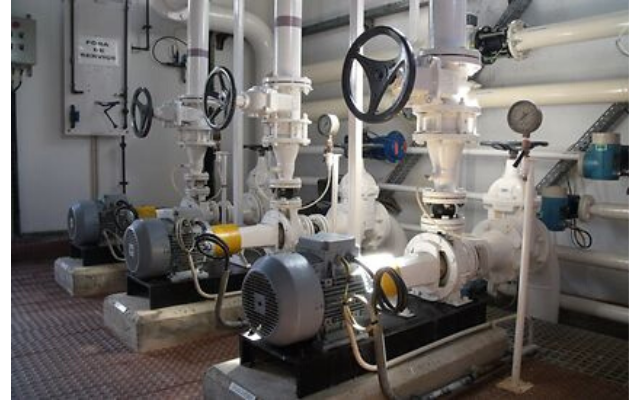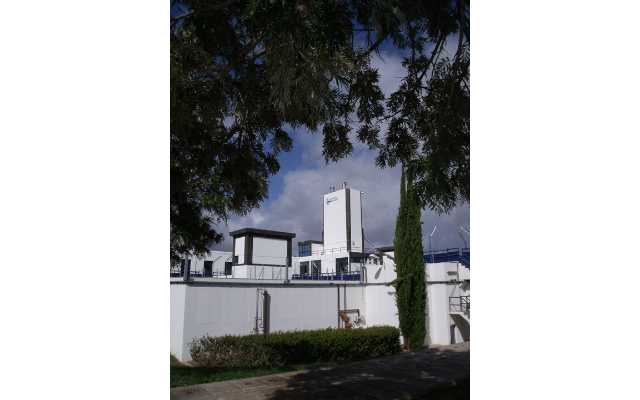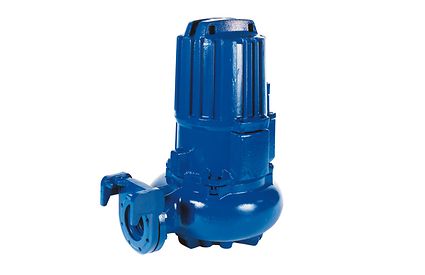In recent years, the region has invested heavily in water supply systems. A major achievement: the construction of a water supply pipeline and a wastewater gravity pipeline.
The project: Supplying drinking water in the Algarve
The Algarve region of Portugal is internationally renowned for its outstanding natural beauty, fine beaches, a slow pace of life and all-year-around temperate climate. These factors make it a highly popular holiday destination and also provide advantageous conditions for agriculture. As one of Europe’s sunniest regions, optimizing water usage is given a high priority, as is wastewater/effluent treatment. With many Blue Flag beaches (the European Standard for beach quality) along the 500km coast and many natural wildlife habitats, pollution is always a major concern.
Before the Algarve Multi-Municipal Water Supply System was established in 2000, every municipality in the east and west was responsible for its own water supply pumping and piping infrastructure. Both regions had to contend with qualitative and quantitative problems concerning the public water supply, which came from underground sources and dams. Until the construction of the Multi-Municipal System, these sources supplied most of the permanent residents and temporary population. In addition, agriculture also required considerable amounts of water for irrigation purposes.
The pressure exerted by the growing search for water was so strong that the availability of water decreased, and the quality of the water supplied dropped considerably in many aquifers as a result of over-exploitation, especially during consecutive dry years. Poor quality was, to a degree, attributable to saline intrusion which led to a sharp increase in chloride content in areas close to the sea together with widespread pollution as a result of intensive agricultural activities.
The Algarve water supply system operates four water treatment plants and 32 pumping stations along the network of treated water and raw water pipelines. The treated water pipeline runs at an average elevation of 100m above sea level along its 454km length, with the individual pumping stations extracting water at pressures and volumes as required. These are controlled remotely in the main water treatment plants at Tavira and Alcantrilha using telemetry.
The main aim is to supply enough quality drinking water all year round and to equip the region with a safe system in terms of public health, improving levels of assistance and promoting environmental quality, more specifically the quality of the water of the Algarve’s beaches and rivers, which is an essential factor for the well-being of the population and for developing the Region’s economy and tourism.

Horizontal Etachrom pumps are used for treated water distribution. Tavira plant can treat 2.2m³/s of drinking water.
The client: Aguas do Algarve SA
This infrastructure investment program was made possible by bringing together the Algarve Multi-municipal Water Supply System and Algarve Multi-municipal Sanitation System. Jointly known as the Algarve Multi-Municipal Water Supply and Sanitation Systems (AMWS&SS), the activities of these two systems are under the management of Aguas do Algarve SA, which holds the 30-year concession from the Portuguese Government.
The challenge: Selecting pumps to withstand sand and fluctuating demand for decades
In designing the network, engineers had to provide a water supply system that would operate to maximum capacity, taking into account projected growth and demand, for the period up to 2055. However, at certain times of the year, the demand drops considerably, creating a situation where efficiency levels decline and production costs per liter of treated water increases.
In order to overcome this situation, it was decided to install identical pump types, but with varying flow capacities, and to reduce maintenance costs. In this way, when demand drops, the water treatment plant can switch to smaller capacity pumps running at optimum performance as opposed to large pumps running at a low-performance rate. In addition, almost every pump is fitted with speed control to adjust capacity to demand.
The major problem that the pumps face is sand as this can have a serious adverse effect on impellers. Furthermore, the pumps have to counter the problem of clogging, which is most important during the summer when the population increases substantially and the nature of the raw effluent changes. To counter this, some pumps were supplied with special wear-resistant impellers.
Design and operating requirements that had to be considered were:
- 202 km gravity pipeline
- 170 km pressurized pumped sewage pipeline
- upgrade 57 wastewater treatment plants
- build and refurbish 159 pumping stations.
The solution: A perfect mix of KSB pumps for the water supply pipeline and wastewater treatment plants
There are three major pumping stations; these being Tavira, Alcantrilha (both of which have treatment plants nearby), and Vilamoura, and each one has been equipped with a variety of KSB pumps for a range of supply applications. In the east, the main Tavira plant can treat 2.2m³/s of drinking water with a further station treating 0.5m³/s. In the west, the main Alcantrilha plant has a treatment capacity of 3.0m³/s with a second station providing a capacity of 0.125m³/s. In the middle of the two sub-systems (East and West) is the Vilamoura reversible pumping station.
At the Tavira plant, the pumping station fulfills two duties; bringing water raw water into the plant for treatment and then supplying treated water to storage reservoirs along the system. KSB pumps operated include large tubular casing pumps of the SNW series pumps for raw water intake and Etachrom and Etanorm for treated water distribution.
The Vilamoura reversible pumping station connects the east and west systems and was designed to reverse the water delivery flow when necessary. This pumping station is important because on the west side of the Algarve water is less available than on the east, so it is necessary to transfer water from east to west, usually in the summer when populations increase. The reservoirs in the east have a larger capacity than in the west, so in the event of a dry winter, the western system can be topped up.
Built-in two stages, the Vilamoura reversible pumping station can pump water in one direction to another using a pipe and valves system. It is in effect a twin pumping station with one station fitted with KSB high-pressure multistage pumps of the Multitec series, each capable of handling 75l/s. This pump was selected because it offers adjustment of the suction and discharge nozzles according to the system and its low operating costs.
Depending on each way the Vilamoura station is pumping, it has to satisfy differing needs in respect of capacities and pressures. The discharge pressures may change by as much as 6 Bar depending on demand and pumping direction. By employing variable speed, it is possible to meet the duty point and range of the demand of both the east and west parts of the system.
Along with the investment in the treated water supply, there has also been a substantial upgrade of the effluent treatment plants along the coast. This has involved the construction of a 202km gravity pipeline and 170km pressurized pumped sewage pipeline together with the upgrading of 57 wastewater treatment plants and the building and refurbishment of 159 pumping stations. The infrastructure is now in place for municipalities to transfer untreated and part treated wastewater and effluent into a central gravity pipeline.
According to Nuno Aleixo, project engineer at KSB’s office in Lisbon, KSB has been involved with both the water supply system and the wastewater treatment system right from the start of the project. The most widely specified pump is the Amarex KRT wastewater submersible pump, because it can satisfy the varying demands that occur in this region throughout the year. The Amarex N and Amarex KRT pumps are used for raw sewage pumping and in treatment plants, as the requirement is for a smaller or larger size of pump. Unlike the water supply pumps, the pumps used in the handing of untreated and treated effluent have to operate all day long, which places them under a considerable workload. Several Amamix and Amaprop agitators were installed on different treatment stages on wastewater treatment plants.
“From Easter through to September there is a big challenge to keep a high level of sewage treatment capacity in order to ensure the beaches maintain their water quality and Blue Flag status,” says Mr Vieira Pereira, Maintenance Co-ordinator Engineer at Aguas do Algarve. “Our concern is not just the quality of the treatment. Because many properties are located close to the sea, it is important to maintain constant operation of the pumping stations, transferring effluent to the treatment plants to avoid coastal contamination. Pumps have to be reliable, which is why pumping stations are provided with standby pumps and designed for optimum usage. And just in case there are power supply problems, standby generating sets are installed.” Reports provided by Aguas do Algarve show that the KSB pumps are highly reliable and give the desired levels of operating efficiency.
Ensuring that the water is readily available where it is required and wastewater and effluent are handled safely and efficiently can, to a large degree, be attributed to wise pump selection made by contracting engineers working for Aguas do Algarve, often supported in their efforts by KSB Portugal. For Aguas do Algarve, the main issues when specifying pumps are reliability and efficiency. The Company first installed KSB pump around 20 years ago and according to Aguas do Algarve, the original pumps have measured up to all expectations, as have all those subsequently installed throughout the region.






Comments